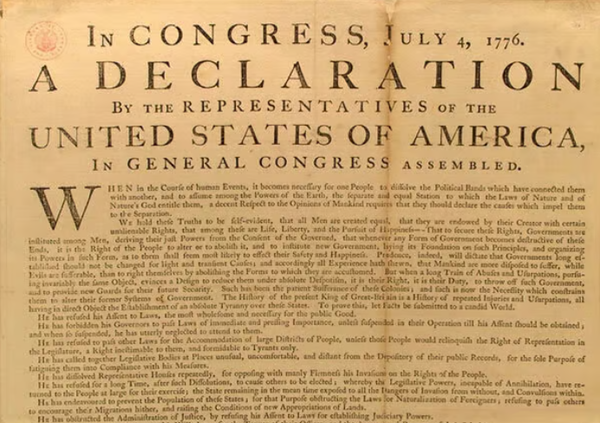How car makers invented the idea of jaywalking

In the 1920s, the auto industry chased people off the streets of America, says Clive Thompson, by waging a brilliant psychological campaign. They convinced the public that if you got run over by a car, it was your fault. Pedestrians were to blame. People didn’t belong in the streets; cars did. It’s one of the most remarkable (and successful) projects to shift public opinion. Indeed, the car companies managed to effect a 180-degree turnaround. That’s because before the car came along, the public held precisely the opposite view: People belonged in the streets, and automobiles were interlopers.
This artist can only paint while he's asleep
Lee Hadwin writes for the Guardian: "Watching videos of me painting is very strange, as I have no recollection of it. I often wake up feeling as if I have done something in my sleep but I can never quite remember what. I paint with both hands, but awake I’m only right-handed. T will leave my art supplies in my drawers and when I’m asleep I’ll know where to go. At a friend’s place, I drew on a plasterboard using chicken bones and coal left over from a barbecue we’d had in the garden. I’ll use any tools I can find, sometimes knives and forks. That’s the only thing that worries my partner – that I’ll accidentally hurt myself. But it hasn’t happened so far. People sometimes assume I’ll always paint a fully developed work of art in the night. In truth, my success ratio is more like one in 50.

When the push button was new, no one liked it
The doorbell. The intercom. The elevator. Once upon a time, beginning in the late nineteenth century, pushing the button that activated such devices was a strange new experience. The electric push button, the now mundane-seeming interface between human and machine, was originally a spark for wonder, anxiety, and social transformation. Media studies scholar Rachel Plotnick details, people worried that the electric push button would make human skills atrophy. They wondered if such devices would seal off the wonders of technology into a black box: “effortless, opaque, and therefore unquestioned by consumers.”

The Japanese tradition of eating wasps
The people of Kushihara, a mountain village in Japan, have an age-old obsession with wasps, specifically the Vespula flaviceps—a species of flying insect known in Central Japan for its exquisite deliciousness. In this rural village, the wasp is celebrated as a seasonal wild food, like matsutake mushrooms, that peaks in late autumn as their nests swell with wiggly, buttery larvae. The people of this region have been eating and celebrating their edible insects for centuries. The practice is as casual as keeping an apple tree in the yard.

When the CIA tried to use a cat as a spy
According to a March 1967 report entitled “Views on Trained Cats [Redacted] for [Redacted] Use,” the CIA stuffed a real, live cat with electronic spying equipment and attempted to train it to spy on America’s Cold War rivals. The report states that Acoustic Kitty (as the project is commonly known) was a “remarkable scientific achievement.” Unfortunately, the report also states that the continued use of live cats as eavesdropping devices “would not be practical.” According to a former special assistant to the director of the CIA, the agency spent a lot of money to implant batteries and a listening device into a house cat, and it seemed to be working – until the cat walked out into the street and a taxi cab ran him over. "There they were, sitting in the van with all those dials, and the cat was dead!”

Fondue became popular because of the Swiss cheese cartel
The popularity of fondue wasn't an accident. It was planned by a shadowy association of Swiss cheese makers, says NPR. A cheese cartel basically ruled the Swiss economy for 80 years, until fairly recently. The story of the Swiss Cheese Union is a cautionary tale about the abuse of power and fondue. It starts after the First World War. Europe was destroyed; Switzerland was OK - still had cows, still made cheese. In fact, they had too much cheese. Swiss cheese was piling up, and the cheese makers decided to form a cartel - an agreement among competitors not to compete. It was like OPEC for cheese. For decades, they set the price of milk, limited production, restricted the kind of cheeses you could make in Switzerland. They really pushed the Emmental, the cheese with the little holes.

A board game from ancient Egypt
Senet was a board game from ancient Egypt for two players. This set inscribed with the Horus name of Amenhotep III is from the period 1391–1353 BCE
— Massimo (@Rainmaker1973) November 30, 2022
[read more: https://t.co/kXeFoXnLiz] pic.twitter.com/CB4iUCHhhi



